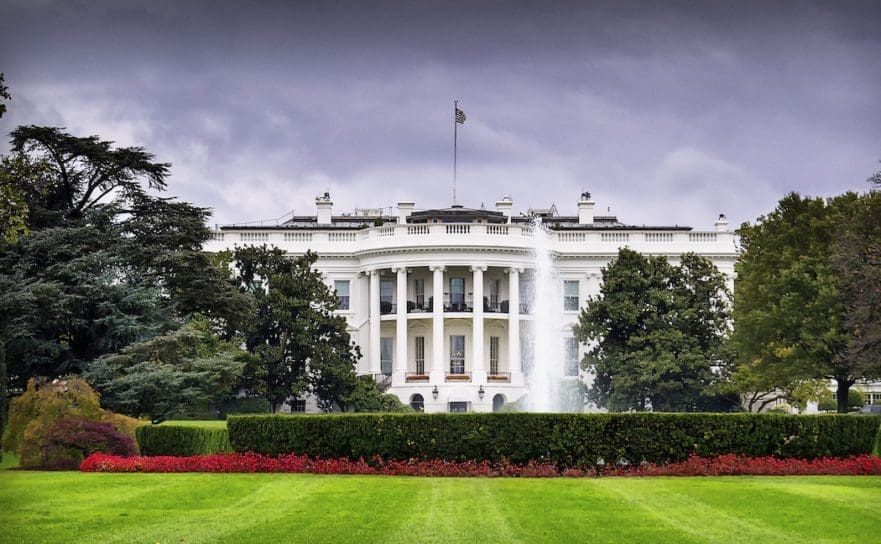Senior citizens forced into substandard housing. Working-class families pushed into homelessness. People of color shoved out of their longtime communities. College students sleeping in their cars, if they have a car. The cause? Americans are getting slammed, day after day, by a devastating housing affordability crisis, which is turning into a public health catastrophe. An urgent, humane response is desperately needed.
Since the start of 2019, politicians from California, New Jersey, Massachusetts, Vermont, and elsewhere have jumped into the 2020 presidential race. They talk about Medicare, the Green New Deal, income inequity, and criminal justice reform. All important issues, but presidential candidates must also take up the nation’s housing affordability crisis as a top priority.
In many ways, before anything else, affordable, adequate shelter is crucial for a healthy, productive, just society. Right now, too many Americans can’t pay for the doctor or medications because their rents are excessive and unfair. They can’t afford college since their rents are sky-high. They can’t save money for retirement or home ownership because they shell out too much for skyrocketing rents.
Even worse, Zillow, the real estate site, found that cities that have rent-burdened residents will face a worsening homeless crisis. “Communities where people spend more than 32 percent of their income on rent can expect a more rapid increase in homelessness,” Zillow recently reported.
A widely cited, 2018 study by the Pew Charitable Trusts lays out the seriousness of America’s housing affordability crisis:
- In 2015, 38 percent of all “renter households” were rent burdened, an increase of about 19 percent from 2001.
- The share of renter households that were severely rent burdened—spending 50 percent or more of monthly income on rent—increased by 42 percent between 2001 and 2015, to 17 percent. Increasing rent burdens were driven in part by year-over-year growth in gross rent—contract price plus utilities—that far exceeded changes in pretax income, which means that after paying rent, many Americans have less money available for other needs than they did 20 years ago.
- In 2015, 46 percent of African-American-led renter households were rent burdened, compared with 34 percent of white households. Between 2001 and 2015, the gap between the share of white and African- American households experiencing severe rent burden grew by 66 percent.
- Senior-headed renter households are more likely than those headed by people in other age groups to be rent burdened. In 2015, about 50 percent of renter families headed by someone 65 or older were rent burdened, and more than a fifth were severely rent burdened.
- Rent-burdened families are also financially insecure in many other ways:
- Nearly two-thirds (64 percent) had less than $400 cash in the bank; most (84 percent) of such households are African-American-headed.
- Half had less than $10 in savings across various liquid accounts, while half of homeowners had more than $7,000.
- Fewer rent-burdened households transitioned from renting to owning in 2015 than in 2001. Households that were rent burdened for at least a year were less likely to buy a home than those that never experienced a rent burden.
Fueling these problems are troubling housing policies — pushed by politicians, academics, developers, and landlords — that put profits over people. That don’t consider how gentrification and displacement impact longtime residents while another luxury-housing complex, approved by elected officials, is built. Progress is not progress if everyone is not included in that progress.
Presidential candidates, in other words, can’t offer more of the same. They must provide solutions that help the people they serve, not only the developers and real estate insiders who get them elected.
To that end, Housing Is A Human Right and others in the housing justice movement support a three-pronged approach to help the middle- and working-class. HHR calls it the “3 Ps.”
First, protect tenants through stronger tenant protections such as rent control and “just cause” eviction. Second, preserve communities, such as ensuring rent-controlled units aren’t demolished or taken off the market in working-class neighborhoods. Third, produce housing, such as increasing state and federal funding for truly affordable housing.
Politicians and developers too often promote a “trickle-down” housing agenda, which pushes for the mass construction of luxury housing, to solve America’s housing affordability crisis. But more luxury housing doesn’t directly address an emergency that’s unfolding right now — and it doesn’t work. In fact, it fuels gentrification in Los Angeles, San Francisco, and other big cities in the U.S.
(Read our investigative report: “The Garcetti-fication of Los Angeles: A Gentrification Cautionary Tale.”)
Professor Richard Florida, a kind of urban planning guru, recently wrote that “the markets—and neighborhoods—for luxury and affordable housing are very different, and it is unlikely that any increases in high-end supply would trickle down to less advantaged groups.”
Zillow Chief Economist Dr. Svenja Gudell also noted: “There’s a growing divide in the rental market right now. Very high demand at the low end of the market is being met with more supply at the high end, an imbalance that will only contribute to growing affordability concerns for all renters. We’re simply not building enough at the bottom and middle of the rental market to keep up with demand.”
In truth, trickle-down housing is merely political cover used by elected officials and developers to approve and build whatever they want in the chase for more campaign contributions and outsized profits. Reporters covering the 2020 presidential race must be skeptical of any candidate who proposes a trickle-down housing solution. As Zillow’s Svenga Gudell pointed out, we need more affordable housing, not just any kind of housing. It’s common sense.
In addition, housing activists have long seen, on the frontlines, that a “build, baby, build” approach to the housing affordability crisis is unrealistic and ineffective — and again convenient for politicians and luxury-housing developers. “You can never build your way out of an affordable housing crisis,” Barbara Schultz, former directing attorney of the housing unit at the Legal Aid Foundation of L.A., told L.A. Weekly. Stronger tenant protections and preserving existing affordable housing are essential.
As the 2020 presidential campaign moves forward, we expect plenty of debate about how to address the nation’s housing affordability crisis. Presidential candidates must reach out to the grassroots housing rights movement, listen, and then provide people-first solutions. The 3 Ps — protect tenants, preserve communities, and produce housing — should be the foundation for any proposal.

